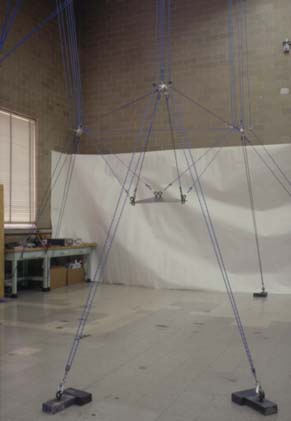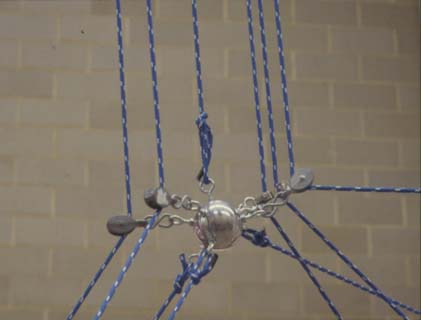Undersea Configurations2
Return to Undersea Configurations Page
(a) Photograph of the Cora B model suspended from a 6 m high ceiling and weighted at the floor with lead bricks. (b) Photograph of one of three suspended cable nodes on the Cora B.
a  b
b 
This cable controlled platform system (Photo a) is shown as if suspended (vertical cables) from three ships spaced up to kilometers apart. Weights (or anchors) located at the ocean floor provide a means to react horizontal forces generated by the suspended platform (center of system). Suspended cable nodes (Photo b) provide attachment points and pass-though points for the platform and weighted cables. The nodes can be adjusted in height and separation for variable work volumes. The system creates a support system to move the suspended platform in six degrees-of-freedom.
Set-up scenario would be to lower the weights (anchors) from ships to the sea floor. Once deployed, the weights allow a support point to react the nodes against for their placement. The nodes and platform are lowered to their appropriate application position and the system is driven by winches on-board the ships. Remote communication is expected for controlling the six platform winches simultaneously.
The advantages of this deep water system are that: it can work over an extremely large work volume, it can move large tools and equipment in all six degrees-of-freedom, it is simple to deploy and control, and since the system has no moving parts at the platform, it won't disturb the sea floor to cloud camera views.

